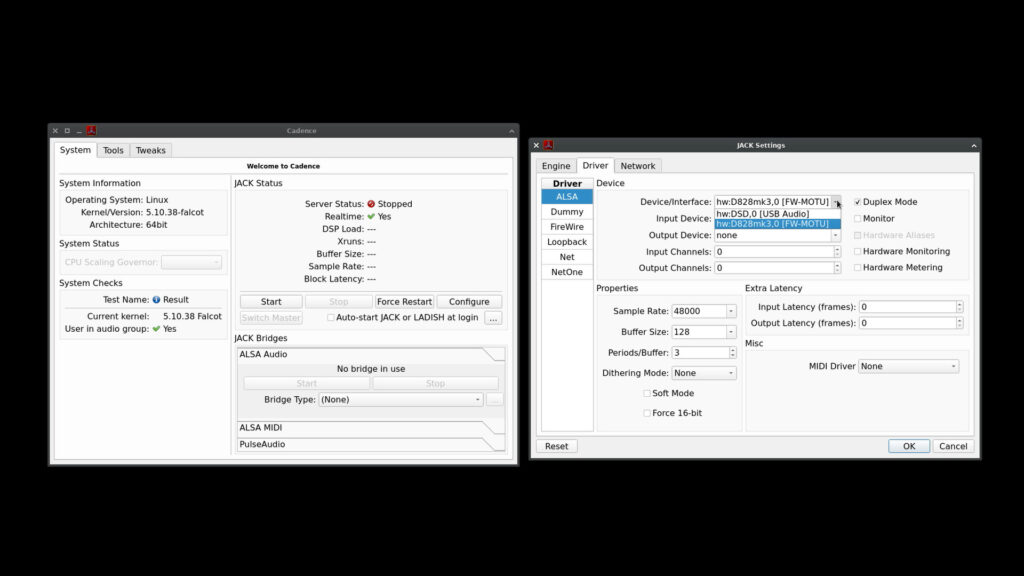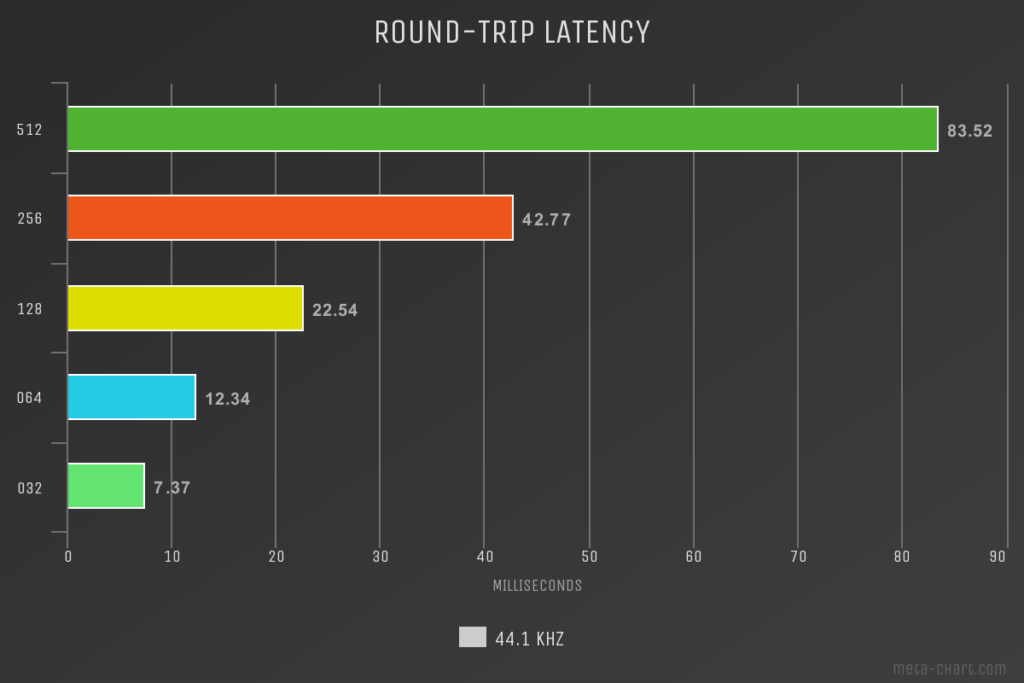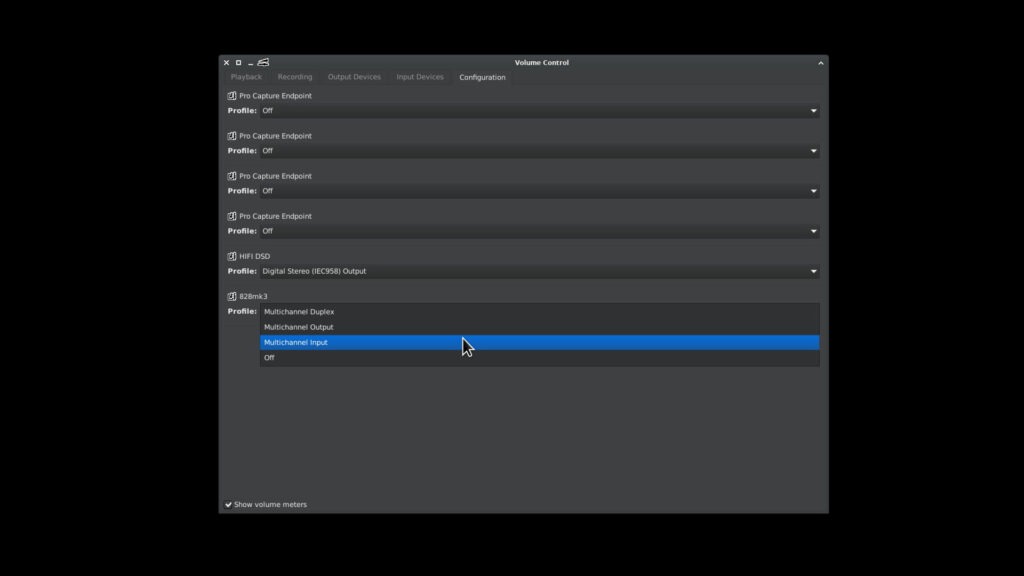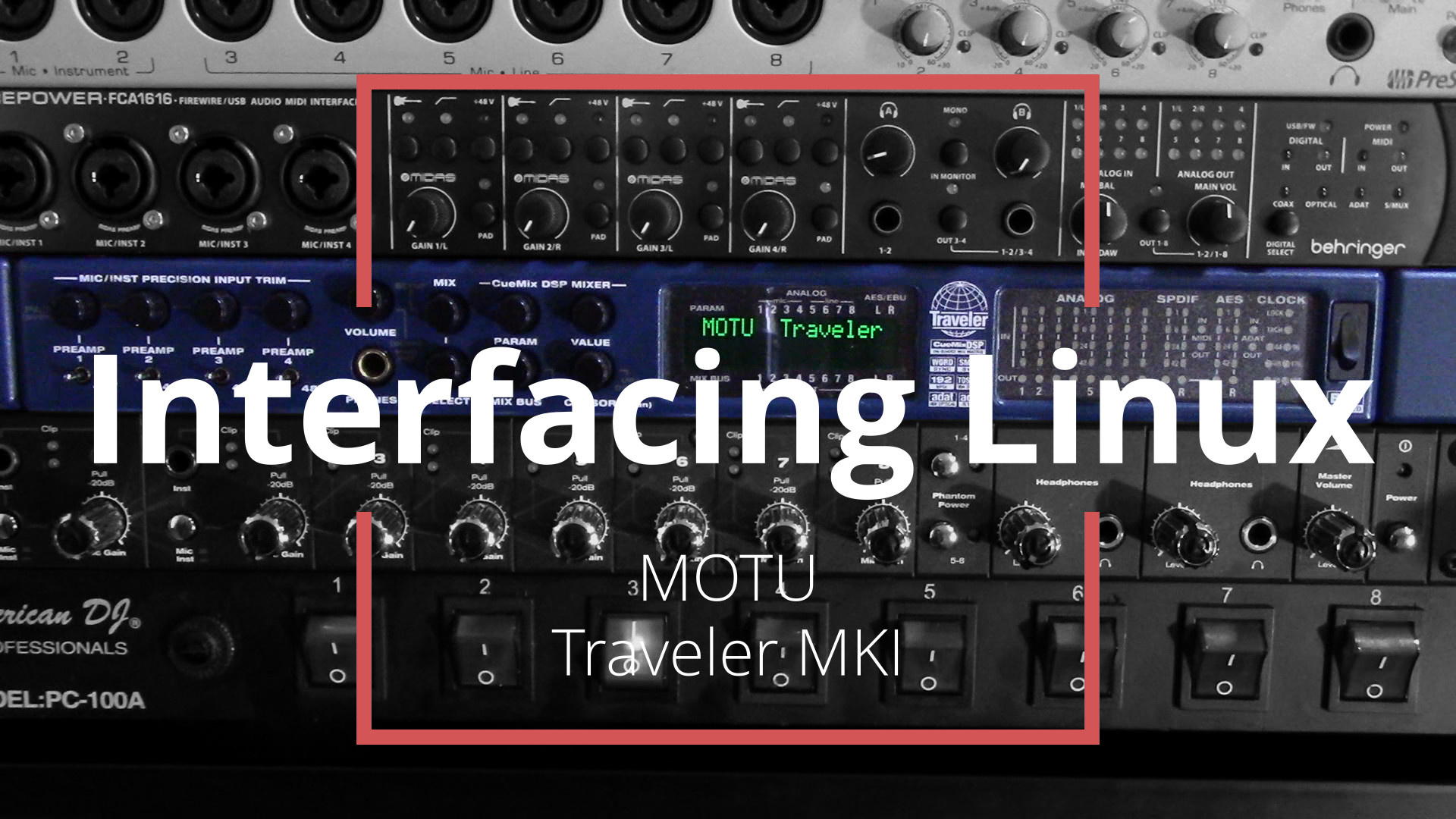The original 828 ushered in a new era in desktop recording as the first-ever FireWire audio interface. It was simple, to the point, and painfully blue. Ten years later MOTU released the 828 MK3 featuring onboard effects, 192 kHz sampling rate, dual headphone jacks and most importantly, not blue. Lets see if it knows how to Linux in 2021.
Audio & Video Questions
If you have questions about setting up and configuring audio/video hardware or software, head over to the community forums on Interfacing Linux.
Technical Specifications
| Converters | 24-bit |
| Sample rates | 44.1, 48, 88.2, 96, 176.4, 192 kHz |
| Analog inputs | 2 x XLR/TRS combo-style mic/guitar inputs 8 x 1/4″ TRS line inputs (balanced/unbalanced) |
| Analog outputs | 2 x XLR balanced main out 8 x 1/4″ balanced TRS line out 2 x 1/4″ TRS stereo headphone |
| Digital I/O | 16 channels of ADAT optical at 1x sample rates 8 channels of SMUX optical at 2x sample rates 2-channel TOSlink (optical S/PDIF) up to 96 kHz 2-channel RCA S/PDIF up to 96 kHz |
| Total I/O | 28 inputs and 30 outputs at 1x sample rates 20 inputs and 22 outputs at 2x sample rates 10 inputs and 10 outputs at 4x sample rates |
| Computer I/O | 1 x Firewire 400 |
| Sync I/O | 1 x SMPTE time code in (LTC) 1 x SMPTE time code out (LTC) 1 x word clock in 1 x word clock out |
| Headphone output | 1 x 1/4″ TRS stereo phone (assignable) 1 x 1/4″ TRS stereo phone (mirrors main outs) |
| Phantom power | 2 x individual +48V |
| Front panel | 2 x XLR/TRS combo mic/guitar in 2 x 1/4″ TRS phone 2 x digital rotary encoders • phone/main volume 2 x digital rotary encoders • mic trim 4 x switches • Pad and 48V Phantom 4 x digital rotary encoders for LCD control 2 x 16 character LCD 8 x 4-segment ladder LEDs • 1/4-inch analog in 8 x activity LED • 1/4-inch analog out 2 x 4-segment ladder LEDs • RCA S/PDIF in 2 x activity LED • RCA S/PDIF out 2 x 10-segment LEDs • mic in with V-Limit 2 x 5-segment ladder LEDs • main outs 6 x LED • sample rate indicator 1 x LED • LOCK/TACH indicator 2 x activity LEDs • optical bank A/B 1 x activity LED • MIDI in/out 1 x AC power switch |
| Power | International 100-240V autoswitching supply 50-60 Hz • 20 Watts |
Drivers
1. Install kernel headers, dkms, and git.
sudo apt install linux-headers-$(uname -r) dkms git
2. Clone the repository and install
git clone https://github.com/takaswie/snd-firewire-improve.git cd snd-firewire-improve sudo ln -s $(pwd) /usr/src/alsa-firewire-4.17 sudo dkms install alsa-firewire/4.17 (superuser)
3. Reboot
Pulseaudio
With the ALSA drivers installed the MOTU 828 MK3 should function like any other sound device in pavucontrol.
Jack
Since we are not using the FFADO drivers remember to select ALSA and the correct device.
Round-trip Latency
While many kinds of audio latency metrics exist, one useful and well-understood metric is round-trip latency; the time it takes for an audio signal to enter the input of a device, get processed, and exit the output.
Testing setup
| CPU | AMD Ryzen 7 1700 | ||
| RAM | Corsair Vengeance LPX 16GB | ||
| Motherboard | MSI B350 Tomahawk | ||
| GPU | Nvidia NVS 300 | ||
| SSD | Samsung 840 | ||
| PSU: | EVGA 600 B1 | ||
| Firewire: | Syba SY-PEX30016 | ||
| Network: | Intel i350-T4 | ||
| OS: | Debian Bullseye | ||
| Kernel: | 5.11-rt-amd64 | ||
| Desktop: | NA | ||
MOTU 828 MK3: Round-trip latency @44100 Hz
MOTU 828 MK3: Round-trip latency @48000HZ
MOTU 828 MK3: Round-trip latency @96000HZ
MOTU 828 MK3: Round-trip latency @192000HZ
Verdict
The MOTU 828 MK3 still sounds great in 2021 but it’s a nightmare to work with. I spent an entire afternoon configuring it to work as a standalone microphone preamp with digital out. This is something that would have taken all of 3 minutes to accomplish with the original software. Unless you have an old Windows XP/Vista box to perform the initial setup you’re going to be using the four front panel knobs. To make matters worse, the manual glosses over config-by-knob because nobody in their right mind would attempt such a thing. Then we have the price, good luck finding one that you would want to own for less than $300.
At the end of the day the MOTU 828 MK3 can be made to work if you’re up for the challenge and have plenty of free time to set on fire.
Where to buy
eBay (used)
Check out our Amazon idea list, and take a look at our studio gear.
MOTU 828 MK3

Pros
2 preamps with 53 dB of gain.
Digital trim for +1 adjustments.
Insert jacks for outboard gear.
Standalone operation.
Cons
No ffado-mixer.
That 16 second startup time is rough.
Mixing & effects have to be done with the front panel.
Price.












